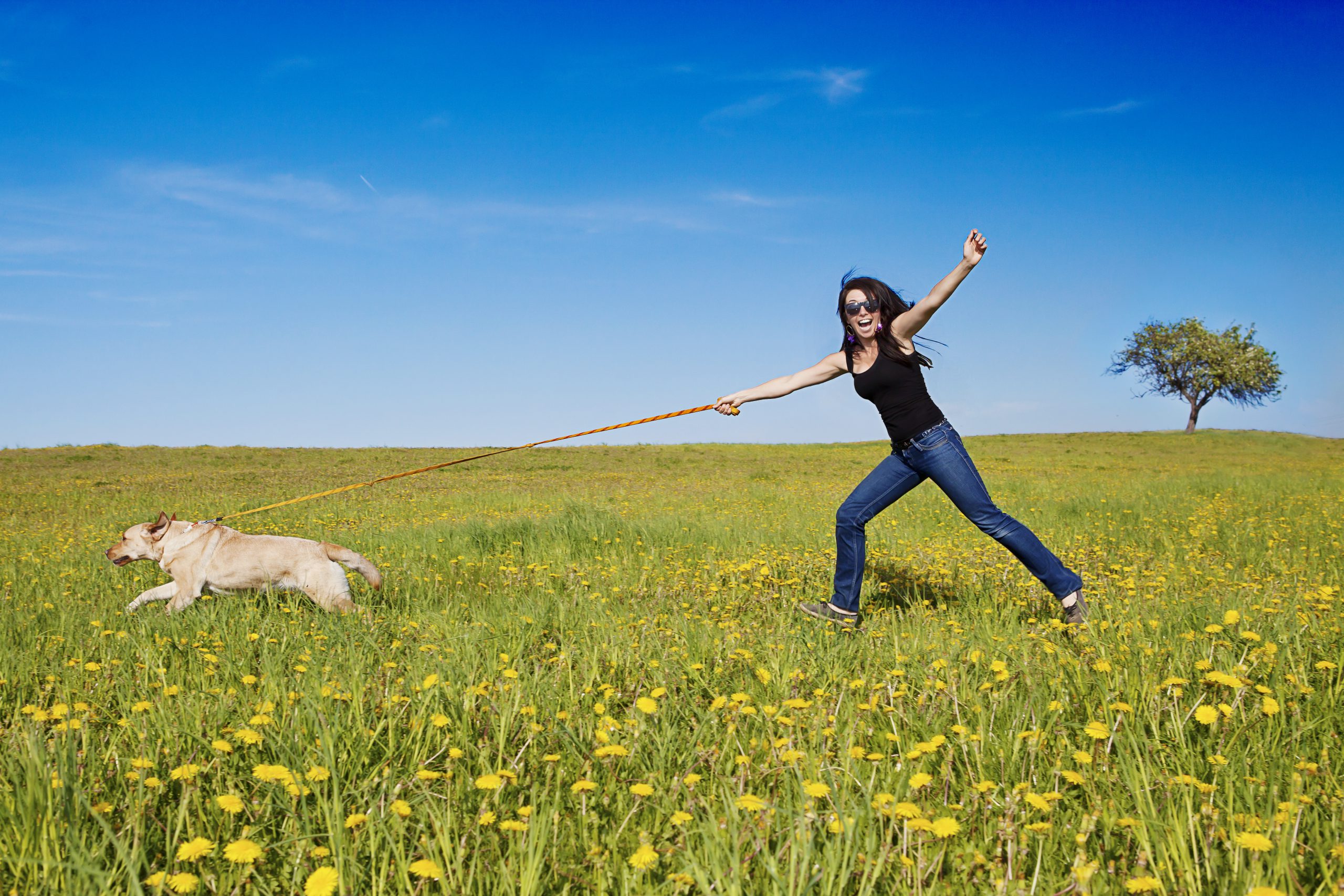Pulling on the Leash
Never allow your dog to pull. Make sure your dog walks calmly beside you or it will learn that pulling pays off.
Keep the Leash Short but Loose
Don’t give your dog too far a slack so that it can wander off far from you. Your dog will learn that there is an acceptable distance when you are walking it with a leash.
Stop When Your Dog Pulls
Whenever you feel the leash go tight, stop. Your dog will wonder why you are not moving and come to you. Reward your dog when it does and continue walking. After a few days, it will learn not to pull on the leash.
Separation Anxiety
Teach your pooch that you will always come back if it gets upset when you leave.
Make Coming and Going Low-Key
Don’t make a big fuss about it by lavishing your dog with attention before you leave home and immediately after you walk in the door. Show your dog that leaving and returning is not a big deal. Ignore your dog before leaving and for a couple of minutes when you return.
Teach Your Dog That You’ll Return
Confine your dog to an area. Give it a chew toy and then leave your pooch for 5-10 minutes at first. Be calm when you go so that your dog knows it’s okay to be alone. When you step back, keep things quiet and give your dog time to relax. Once your dog is relaxed, step outside again.
Whining for Attention
Does your pooch whine to get your attention?
Ignore
If you look at the dog or pet it when it whines, you will teach your furry baby that whining works. Instead of giving it attention, turn your back when it whines. You can also leave the room or fold your arms and look away. Only play or pet your dog when it is not whining.
Barking at the Door
When someone is at the door, does your dog bark relentlessly?
Teach Your Dog a New Habit
Pick a spot or an area just within the sight of the door. Teach your dog to stay or lie down when you say “Go to your place.” It will give your dog something else to do and be calm when someone is at the door. Ask a family or a friend to come to the door. When your dog remains calm and quiet, open the door and give it the treat as a reward. In this manner, it will learn to be calm and quiet to get the treat.
Jumping
Dogs naturally greet their human by jumping. But this can scare the guest away or can be dangerous for small children.
Don’t Give the Attention
Pushing your dog away or yelling will only give your dog the attention it seeks. Ignore your dog when it starts to jump on you instead. Turn your back or cross your arm over your chest and don’t make a sound. If your dog tries to run around to jump on you again, turn the other way around. You can also step outside of the door or room when your dog jumps on you when you walk in. Wait a few minutes and then step back. Repeat this method until your pooch is calm. It will help if you were to give it a treat for being calm.
Use the “Sit” Command
As soon as you are coming through the front door, tell your dog to “sit.” Immediately reward with a treat. Repeat this method and your dog will be sitting as soon as you walk through the door or enter a room.
Biting
When a dog feels nervous or threatened, its natural tendency is to bite.
Socialize Your Dog Early
Introducing your dog to different people will make it more relaxed, especially with people with disabilities, children, and the elderly. Exposing your dog to various situations, such as loud noises, other animals, bicycles, large machines, cars, and anything that might cause fear will lessen the anxiety about strange things and sounds.
Do Not Use Physical Punishment
Any violent punishment will make your pooch more aggressive or fearful. Always use positive reinforcement before resorting to hard training.
Warn Others
If your dog has aggressive or fearful tendencies, always warn other people and do not let your pooch approach other animals or people unless you are there to supervise and control.
Aggression
Any breed is capable of aggression. Behavioral problems such as snapping, growling, or biting are scary and upsetting. You need to take steps to stop it.
Consult Your Veterinarian
Sudden signs of aggression may be due to some diseases or conditions that cause aggressive behavior in dogs. Talk to your pooch’s Vet to determine if your dog needs medication or treatment to improve its behavior.
Contact a Professional Dog Trainer
If a medical problem is ruled out, do not try to fix your dog’s aggression problem by yourself. This grave problem needs a behaviorist or trainer. A professional will create a plan for how to manage your dog’s aggression.

